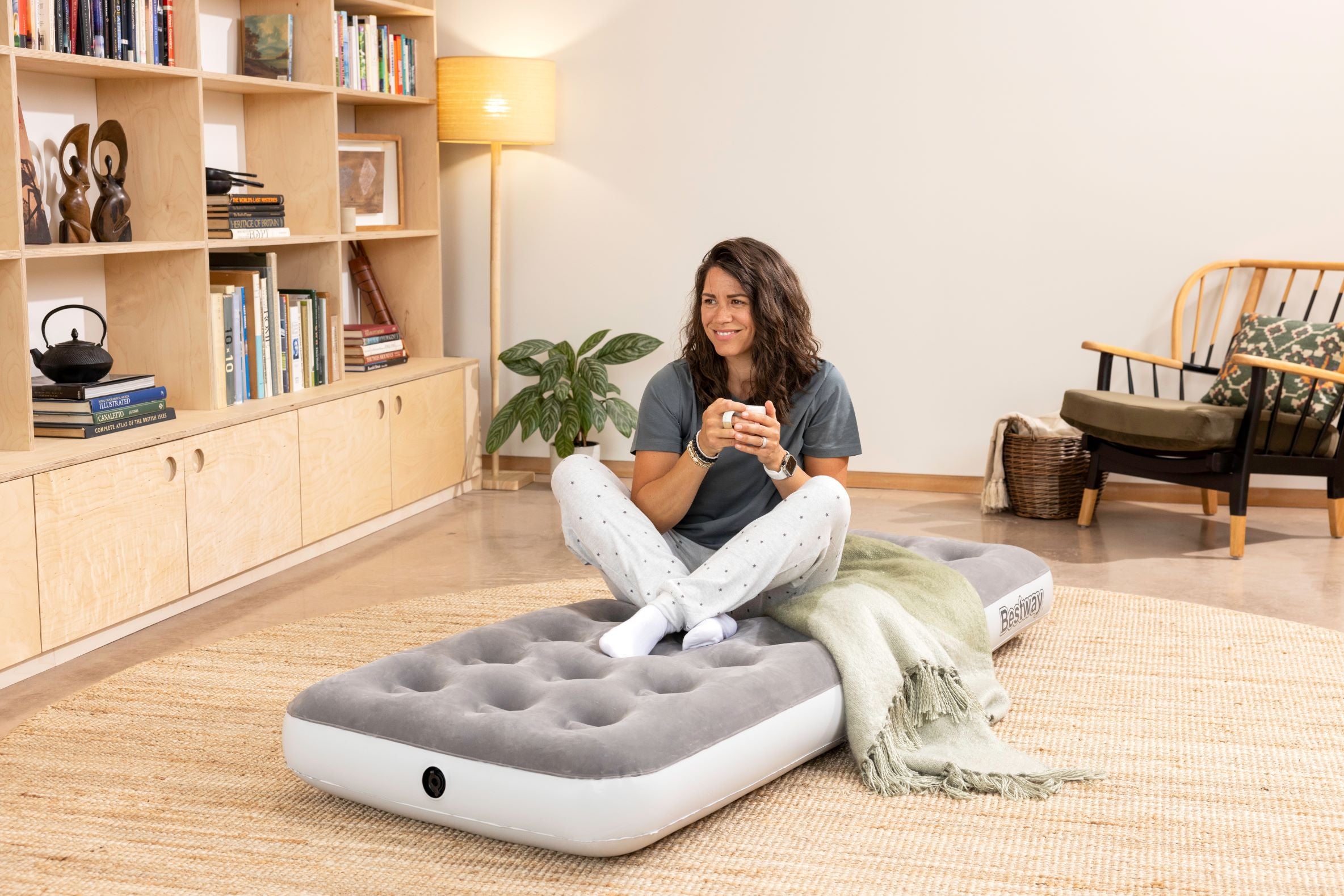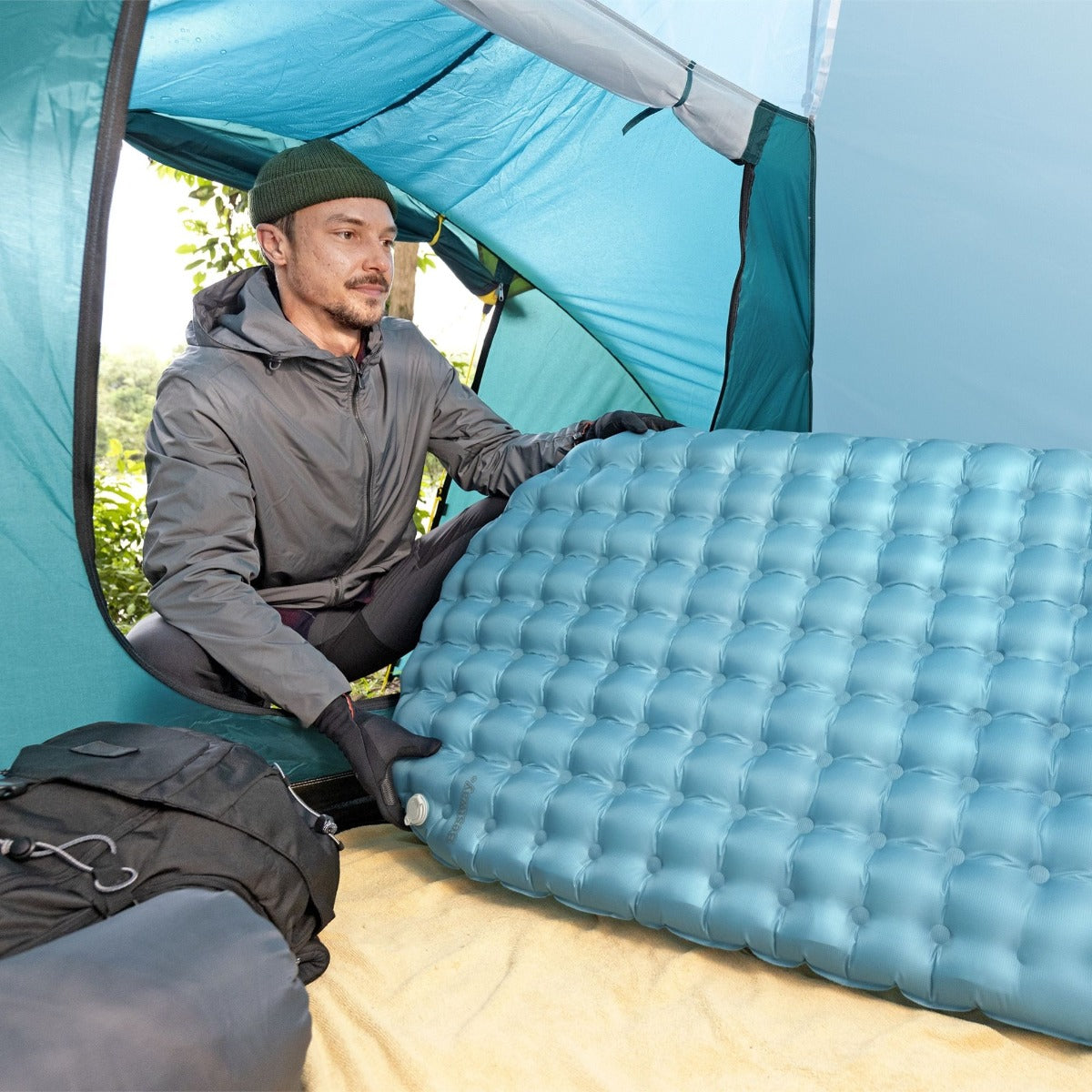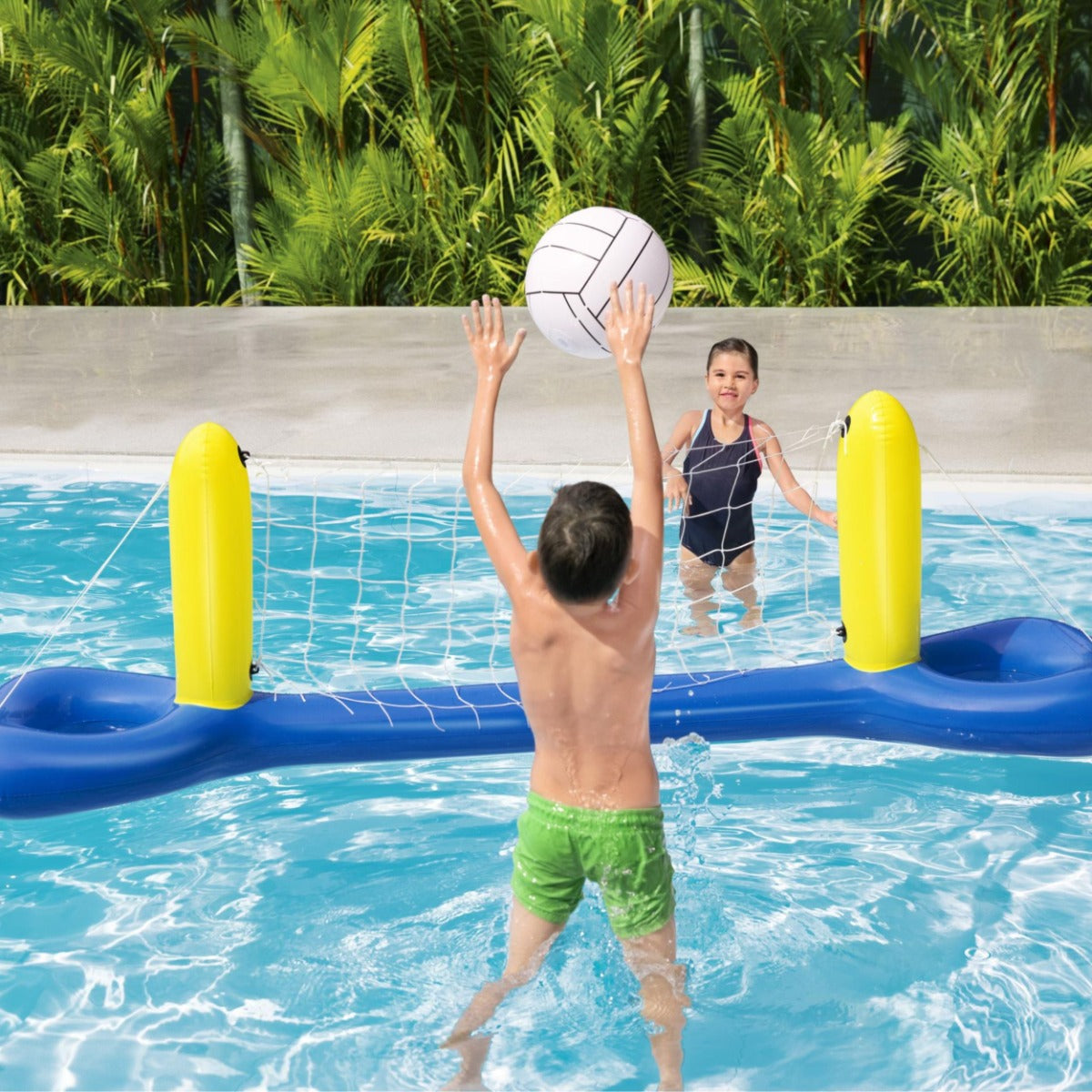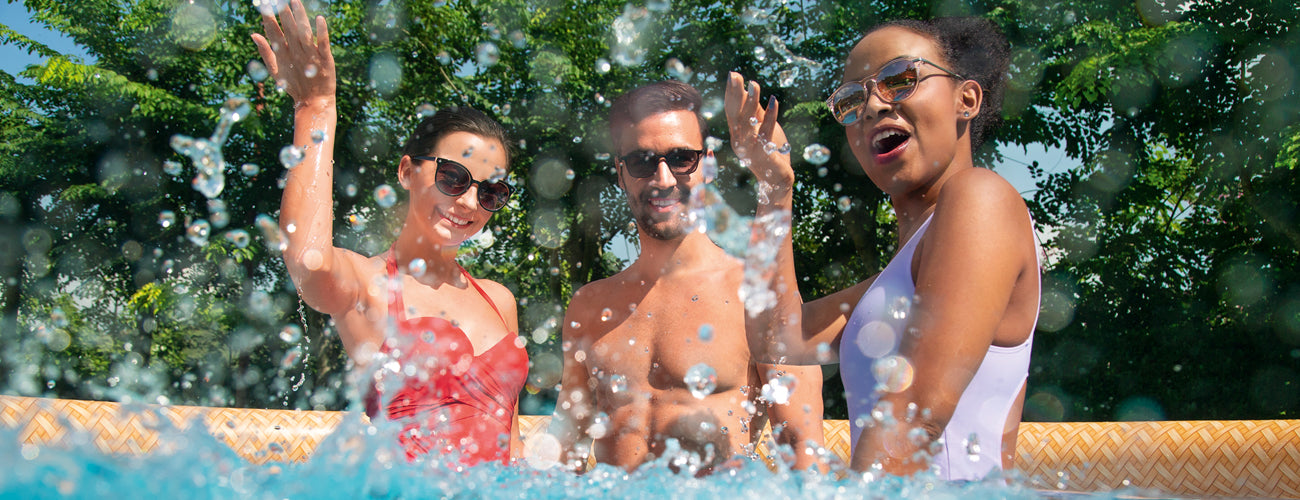Pool Chemical Guide
Quick Start Guide
Step 1: Shock dose
Whenever fresh water is added to a pool (such as when you first fill up) you need to "shock dose"
Shock dosing means adding a high concentration of chlorine as this removes any bacteria or contamination.
You need to wait 24 hours after shock doing your pool before moving onto the next steps.
Step 2. Test the water
Before using your pool, test the water and make sure the chemical balance reads as follows:
- Total Alkalinity - 80‑120 ppm
- pH levels - 7.2‑7.6
- Free Chlorine - 1-3 ppm
Step 3. Adjusting pool chemical levels
Occasionally, you will need to make some adjustments to chemical balance the levels so that your pool water is safe to use. This should always be done in this order:
- Firstly, start with Total Alkalinity and aim for a reading of 80‑120 ppm. If the reading is low, add an alkalinity increaser, if it is high use a pH reducer.
- Next, if necessary, address the pool water pH levels and aim for a reading of 7.2‑7.6. If the pH level is low use a pH increaser and if it is high use a pH reducer.
- Lastly is the Chlorine and you should aim for a reading of 1-3 ppm. Please note that Total Alkalinity and pH work hand‑in‑hand and if these two are not balanced the sanitiser (chlorine) will not work properly.
Please note: Allow at least 2 hours between adding each chemical type and only use the pool once your Total Alkalinity, pH and Chlorine levels are within the required ranges.
Step 4. Use the pool filter
Your pool filter plays an important part in keeping your pool's water clean.
Regularly clean and replace your pool filter and your water will stay cleaner for longer.
Step 5. Shower before using the pool
Just like when you go to a public swimming pool, we recommend showering before using your Bestway pool.
This is because cosmetics such as makeup, body lotions, perfume and hair products can impact your pool's water quality. We also recommend using swimwear that has been washed in water, not detergents.
Clean pool water hacks

Pool Water Shock Dose
What is a "shock dose"?
Shock dosing a pool is adding a larger quantity of sanitiser, such as Chlorine. This is to break down any organic matter, get rid of bacteria and any other contaminants in the water to make it safe to use.
A pool shock dose can also help with any loss of water clarity or quality.
When do you shock dose a pool?
Your Bestway pool water needs a shock dose:
- When you first setup and fill up with fresh water
- After periods of heavy usage
- After a long period of time without being used
- After a loss of water clarity or quality
- After refilling with fresh water
How to shock dose a Bestway pool
A pool needs to be shock dosed with Chlorine Granules. Chlorine tablets are slow releasing and should only be used to maintain daily chlorine levels.
- Check the water capacity of your pool and measure the correct amount of Chlorine Granules. The size of your hot tub will impact how much chlorine you need to add. If your not sure what your pool's water capacity is, you can find all your pool's info here.
- Dissolve the correct amount of Chlorine Granules in a jug of warm water and pour directly into your pool near the filter inlet so that it circulates the chemicals evenly throughout the water.
- After shock dosing your pool, you need to wait a minimum of 24 hours. After 24H, test the chlorine level with the dip test strips and make sure levels are 1-3ppm. Add more Chlorine if necessary but balance the pH and Total Alkalinity first.
The amount of chlorine required to shock dose your pool depends on the volume of water. Refer to the instructions and guidance on your chemical packaging for dosage.
Top Tip: a tablespoon holds approx. 15g of Stabilised Chlorine Granules.
Rough Guide: You need 50gms of chlorine granules for a pool of 1000 gallons (4545 litres).
Total Alkalinity (TA)
What is Total Alkalinity?
TA or Total Alkalinity is the measure the water’s ability to neutralise acids. It acts as a buffer to neutralise the pH.
This might all sound a bit complex, so it's a lot easier to remember that if alkalinity is imbalanced, it can be hard to balance pH levels and chlorine.
The advice we recommend is to balance your pool's TA level before doing anything else.
How to balance Total Alkalinity in a pool?
The correct TA level to aim for in a pool is between 80 and 120 ppm (parts per million).
- For low TA levels below 80 ppm you should use an Alkalinity increaser. The amount of TA + you need to add to your pool depends on the volume of water and how low your readings are. As a guide, 1,000 litres of water requires 18g to raise Total Alkalinity levels by 10 ppm (parts per million).
- For high TA levels above 120ppm you need to use a PH reducer. The amount of pH reducer you need to add to your pool will depend on TA levels are and on your pool's volume of water. Check the dosage rates on the back of the bottle and measure accordingly.
Issues with low or high TA in a pool
Low Total Alkalinity:
- Unbalanced low pH levels
- Loss of water quality
- Skin and eye irritation
- Corrosion
High Total Alkalinity
- High pH levels
- Irregular Chlorine levels
- Cloudy, milky, foamy water
- Scale build-up
What causes low or high TA in a pool?
High TA can be caused by:
- Cosmetics, body lotions, perfume, make up etc
- Hard water
- Water has been in too long and TDS* is high (*Total Dissolved Solids
Low TA can be caused by:
- Rainwater
- Organic contaminants brought into the water by users.
pH Levels
What is pool pH?
pH measures how acidic or alkaline your pool water is. The ideal range for pools and hot tubs is between 7.2 and 7.6.
Properly balanced pH is essentials for other pool chemicals to work properly and imbalanced pH levels can impact parts of the pool and cause skin irritation.
How to balance pH in a pool
When testing your pool water, aim for s reading of 7.2 and 7.6
- Low pH levels below 7.2 need pH Plus to help raise the pH levels and balance the water.
- High pH levels above 7.6, need pH Minus to help bring those levels back down into the recommended range
The amount of pH increaser or reducer you need to add to your pool depends on the volume of water and how low your readings are. Refer to the dosage information will be printed on the individual chemical bottles.
Issues caused by low or high pool pH
Low pH:
- Less effective chlorine
- Loss of water quality
- Irritation to skin & eyes
- Corrosion
High pH
- Skin & eye irritation
- Chlorine levels fluctuating
- Cloudy, milky foamy water
- Scale build-up
Chlorine
Do you need chlorine in a pool?
Yes, chlorine (or another sanitiser) is essential to make and keep pool water safe to use.
Chlorine is a sanitiser that disinfects the water to keep it free from bacteria.
Without chlorine in a pool, the water will rapidly become cloudy, algae may start to form and could quickly become unpleaseant or unhealthy for users.
How much chlorine do I need for a Bestway pool?
The recommended Free Chlorine* level in a pool is 1-3 ppm (parts per million).
- For a pool of 1000 gallons (4545 litres), 9 Grams will increase chlorine levels by 1ppm
- For a pool of 2500 Gallons (11,364 Litres) 23 Grams will increase chlorine levels by 1ppm
Top Tip: a tablespoon holds approx. 15g of Stabilised Chlorine Granules.
*Free Chlorine refers to the amount of chlorine in your hot tub that is available to sanitise or disinfect the water, keeping it safe for users.
Do I need to put chlorine in my pool everyday?
It all depends on how quickly your pool chlorine is getting used up. It could be daily or weekly.
The rate of chlorine consumption can and does vary depending on different conditions and chlorine will be consumed even when there is no swimming (i.e. by sunlight or by algae).
The only way to be sure that there is sufficient chlorine present in the pool water is to test regularly.
Low pool chlorine: what to do
When pool chlorine falls below 1 ppm bacteria and algae can quickly start to grow and water quality can drop quickly.
You will need to add the appropriate amount of chlorine to restore the balance.
Your options are:
- Chlorine granules - the most accurate way of raising chlorine levels in a short space of time, including a shock dose
- Chlorine tablets - these are slow release so could take some time to raise Free Chlorine ppm if it is very low.
- Fast Action Tablets - these go straight into the water and a great for a quick boost of chlorine.
High pool chlorine: what to do
If your pool chlorine chlorine levels are high, such as 3-5 ppm, it could cause some irritation.
We would suggest you drain some of the water from your pool and re‑fill with fresh water. This will help to dilute the excess chlorine.
Algae control
What is Algae in a pool?
Algae are microscopic forms of plant life that can quickly multiply in ineffectively treated water conditions resulting in slippery sides and green or cloudy water.
Chlorine helps prevent algae in pools, but Algaecide is an algae killer and preventative that can be used in your pool water.
How to get rid of pool algae
Once algae forms in a pool it is important to address it quickly.
We recommend using Clearwater® Algaecide.
- For a pool of 1000 gallons (4545 litres), 50ml initially then 25ml weekly
- For a pool of 2500 Gallons (11,364 Litres) 125ml initially then 60ml weekly
How to prevent pool algae
The best ways to prevent pool algae are:
- Keep correct chlorine levels
- Use a pool cover
- Add a weekly does of Algaecide
Water Problem Solving
Cloudy pool water
Cloudy pool water can be caused by poor chemical control, inadequate filtration or contaminants in the water.
1. Clean or replace filter cartridge.
2. Check chemical levels and adjust if necessary (chlorine/PH).
3. Use a Pool Clarifier to remove small particles.
4. Shock Dose.
If the problem persists:
5. Empty the pool and re‑fill with fresh water.
Can't maintain chlorine levels
- Caused by: pH and Total Alkalinity are probably not balanced.
- Remedy: use test strips to gauge pH and TA levels, then address accordingly.
PH hard to control
- Caused by: Alkalinity too low or too high.
- Remedy: Test and adjust Total Alkalinity, then come back to pH.
Green / Cloudy Water / Slippery Sides
- Caused by: Algae
- Remedy: Shock dose with chlorine (see advice above) and add Algaecide
Too much chlorine
- Caused by: Overdose - accidentally putting too much in.
- Remedy: Drain the pool to minimum mark and re‑fill with fresh water to maximum mark, this will help to dilute the excess chlorine.
Rough pool sides / edges
- Caused by: Hard water
- Remedy: Use a stain and scale controller on a regular basis and always ensure TA and pH levels are balanced.
Storage & Handling
Chemical Handling
- Read instructions thoroughly on each product/box before use.
- When pre-dissolving chemicals, always add chemicals to water and not vice versa.
- Never mix different chemicals in concentrated forms. This includes kit products but also with other chemicals like bleach or weedkillers – a dangerous reaction may occur.
- Always pre-dissolve chemicals in a clean, plastic container in a well-ventilated area.
- Avoid spillages. In the event of spillage, clean up using clean receptacles and dispose of them carefully.
- Wash hands after handling pool chemicals
Chemical Storage
- Store chemicals well away from children and pets
- Store in a secure, cool and dry place
- Store chemicals in original packaging and never use unlabelled chemicals

































































